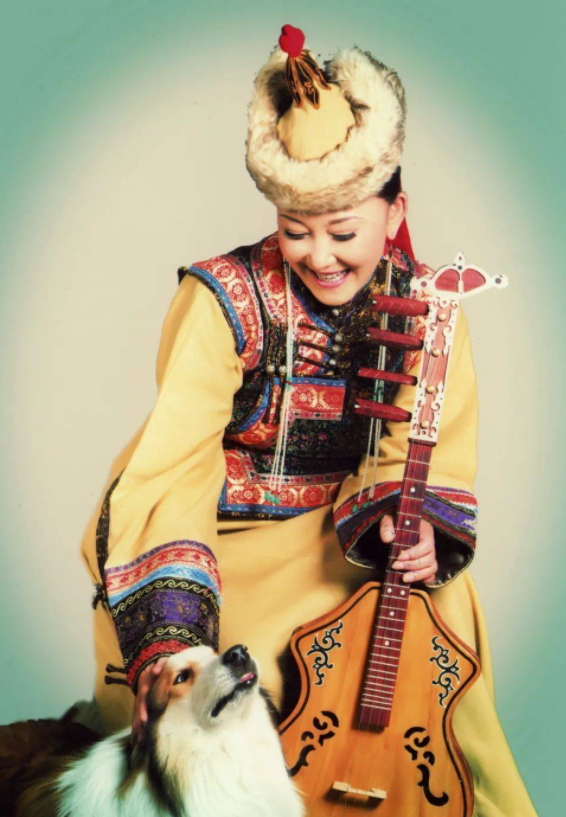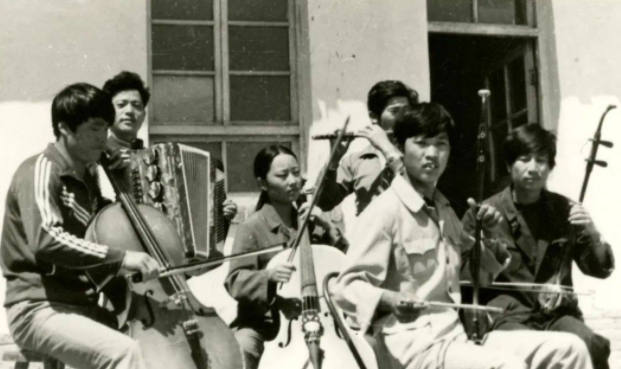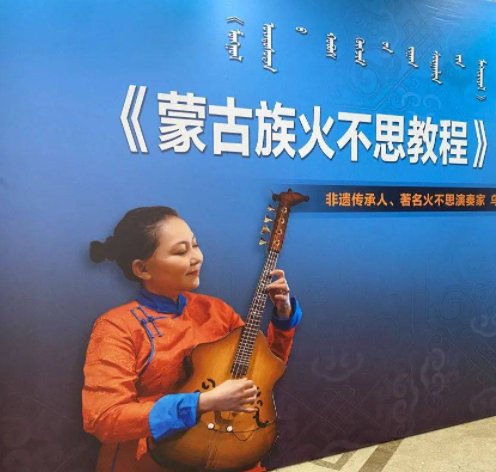The Mongolian inheritor of the thousand-year-old Huobu - Urina
The plucked musical instrument Huobousi has a long history. It was first seen in ancient paintings of the Tang Dynasty and prevailed in the court of the Yuan Dynasty. After the founding of New China, it was widely spread, mainly in Inner Mongolia, Xinjiang, northern Gansu and other places.
In Inner Mongolia, there is a player who has an indissoluble bond with Huobusi. In 2014, she was awarded the title of "Inheritance of Intangible Cultural Heritage of Inner Mongolia Autonomous Region Huobusi" by the Cultural Department of Inner Mongolia Autonomous Region. With the mysterious color of Huobusi, we Approached the player who plucked it - Urina.

Urina was born in Urad Middle Banner, Bayannaoer City. Her father is a music teacher, and under her father's guidance, she has laid a good foundation in music.
In 1976, Wu Rina was still an ignorant little girl. She was supposed to live happily with her classmates at school, but she experienced a life choice in advance - choosing a career. After a rigorous examination, she passed the selection of Wulan Muqi from the Urad Middle Banner, and she became a literary and artistic worker. When she first came to Wulan Muqi, she wanted to learn everything, including various musical instruments, various singing methods, folk dance and modern dance. Soon she grew into a qualified Wulan Muqi team member, and then followed Wulan Muqi. The team went to the grassroots to perform programs for the herdsmen. Wu Rina said: "Ulan Muqi is the cradle of my growth, and here are my best and unforgettable memories."

Ten years have passed in the blink of an eye, because of her personal character and her expression and understanding of art, she switched from singing and dancing to national strumming. In 1985, she was admitted to the Inner Mongolia Song and Dance Troupe with a handful of Zhongruan. After joining the Song and Dance Troupe, he began to perform on stage as a Zhongruan performer. By chance, she heard the melodious sound of Huobusi, probably because of the Mongolian blood flowing in her body, which made her unable to restrain her yearning and impulse towards Huobusi.
After the founding of New China, the country attached great importance to the inheritance and excavation of the heritage of folk music, so that the ancient Huobousi was brought back to life.
In the early 1960s, the luthiers of the Hohhot National Musical Instrument Factory cooperated with the Inner Mongolia Song and Dance Troupe, the musicians La Surong, Gao Qingletu and others from the Inner Mongolia Song and Dance Troupe, Wulan Muqi directly affiliated to Inner Mongolia, and others, to carry out a series of musical instruments. Research and development work to make a new type of Huobusi on the basis of the traditional Huobusi. The design of the musical instrument conforms to the traditional customs of the Mongolian nation and is full of distinctive national characteristics. In the 1980 National Ethnic Minority Art Festival, Gao Qingletu played traditional Mongolian music with a new type of Huobousi, which was welcomed and praised by the audience. This successful work has also been included in the large-scale catalogue of "Chinese Musical Instruments Illustrated Guide".

Urina said: "The spring of 1984 was a beautiful season for me when I was young. That year, I met Gao Qingletu, my long-respected teacher, whose rhythm was like a divine comedy. I was immersed in the ocean of national art and couldn't extricate myself, and Huobusi became my partner in love with my thoughts. So I took Gao Qinglertu as a teacher, and I could say that I was thirsty for learning how to play Huobusi. After that, I never left my Huobusi again."
In terms of Huobousi playing, Urina has carried out active reforms and explorations on the basis of maintaining her original style: she has adapted the Mongolian folk song "Nuoengiya", and transformed this well-known and far-reaching song. Folk songs are expressed in the unique art form of Huobusi and have achieved great success. The Mongolian traditional song "Aqitu" played by Huobusi was included in the "Mongolian Music" CD album by Taiwan Cradle Records Co., Ltd. Since 1993, she has participated in many Huobusi performances and various art festivals at home and abroad.

Since the 1990s, Wu Rina has been committed to the training of the younger generation of Huobousi performers. She has offered Huobousi professional courses in Minzu University of China, Hohhot Art School, Inner Mongolia Xuanyuan Vocational College and Inner Mongolia Drama Academy. Teach skills. In addition, he has been invited many times to the grassroots to train Huobousi players, and to give special lectures to grassroots literary and art workers and amateurs. She has trained nearly 1,000 graduates and amateurs from Huobosi, many of whom have strong performance skills and potential successors.
In 2021, the "Mongolian Huobusi Tutorial" written by Wu Rina will be published, which is a milestone in the inheritance and development of Huobusi. Urina has two wishes: she wants to pass on the national treasure of Huobusi skills to more people, and she also wants to build an exhibition hall for Huobusi pictures and objects.
We believe that Urina's wish will come true, because Teacher Gao Qingletu once told her that if there is a will, things will come true.
 渝公网安备 50010702504639号
渝公网安备 50010702504639号